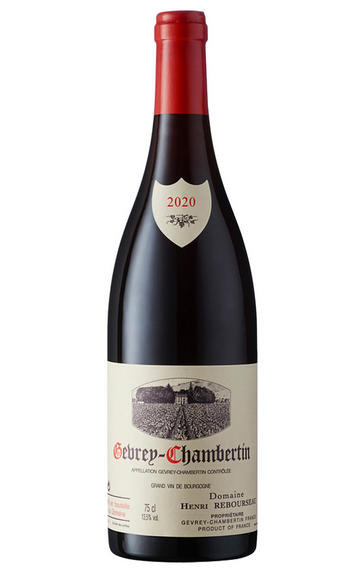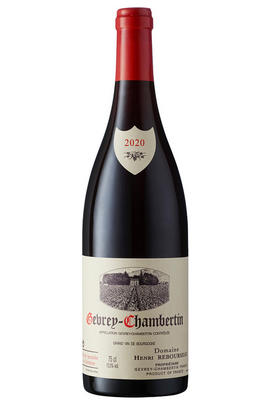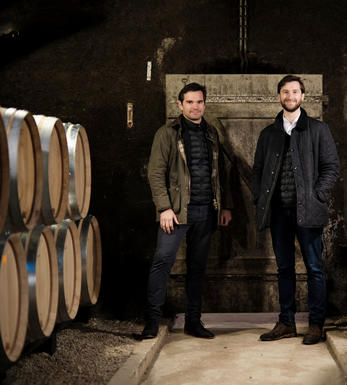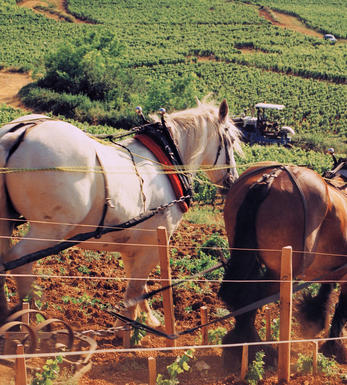
2020 Gevrey-Chambertin, Aux Corvées, Domaine Henri Rebourseau, Burgundy

Critics reviews
Jasper Morris MW, Inside Burgundy (January 2022)
2029+
Allen Meadows, Burghound.com (Jan 2022)
About this WINE

Domaine Henri Rebourseau
Domaine Henri Rebourseau is a wine estate in Burgundy. With its headquarters just outside the village of Gevrey Chambertin, the domaine covers 13.5 hectares of vines across the Côte de Nuits.
A considerable 5.28 hectares are in Grand Cru vineyards, including holdings in Chambertin, Clos-de-Bèze, and Clos de Vougeot. Brothers Benigne and Louis de Surrel represent the seventh generation of their family here; their great-great-grandfather was Henri Rebourseau.
The estate has been farmed organically since 2006, and biodynamically since 2008. It is now part of the SCDM Domaines group, along with other leading French properties including Château Montrose in Bordeaux and Clos Rougeard in the Loire Valley.

Nuits-Saint Georges
Originally known as Nuits, or even Nuits-sous-Beaune, the town was happy to add the name of its finest vineyard, Les St Georges, in the 19th century. There are no Grands Crus, but many fine Premier Cru vineyards, the mayor of the time – Henri Gouges – preferring not to single out any vineyard for the highest status.
The wines of Nuits-St Georges vary according to their exact provenance. Those of the hamlet of Prémeaux, considered to be part of Nuits-St Georges for viticultural purposes, are often on the lighter side.The richest and most sought-after are those just south of Nuits-St Georges such as Les Vaucrains, Les Cailles and Les St Georges itself. The third sector, including Les Murgers, Les Damodes and Les Boudots are at the Vosne-Romanée end of the village, and demonstrate some of the extra finesse associated with Vosne.
Several domaines (Gouges, Rion, Arlot) now produce a white Nuits-St Georges from Pinot Blanc or Chardonnay.
- 175 hectares of village Nuits-St Georges
- 143 hectares of Premier Cru vineyards (20 in all). Best vineyards include Les St Georges, and Clos des Argillières and Clos de la Maréchale in Prémeaux
- Recommended producers: Gouges, Rion, Liger Belair, Potel
- Recommended restaurant : La Cabotte (small but stylish)

Pinot Noir
Pinot Noir is probably the most frustrating, and at times infuriating, wine grape in the world. However when it is successful, it can produce some of the most sublime wines known to man. This thin-skinned grape which grows in small, tight bunches performs well on well-drained, deepish limestone based subsoils as are found on Burgundy's Côte d'Or.
Pinot Noir is more susceptible than other varieties to over cropping - concentration and varietal character disappear rapidly if yields are excessive and yields as little as 25hl/ha are the norm for some climats of the Côte d`Or.
Because of the thinness of the skins, Pinot Noir wines are lighter in colour, body and tannins. However the best wines have grip, complexity and an intensity of fruit seldom found in wine from other grapes. Young Pinot Noir can smell almost sweet, redolent with freshly crushed raspberries, cherries and redcurrants. When mature, the best wines develop a sensuous, silky mouth feel with the fruit flavours deepening and gamey "sous-bois" nuances emerging.
The best examples are still found in Burgundy, although Pinot Noir`s key role in Champagne should not be forgotten. It is grown throughout the world with notable success in the Carneros and Russian River Valley districts of California, and the Martinborough and Central Otago regions of New Zealand.


Buying options
Add to wishlist
Description
This is one of two important parcels in front of the house. Only three metres apart, each has totally different geology and distinct characteristics. This holding is 2.35 hectares; only old vines (planted in 1989) go into this wine. The clay topsoil is nearly one metre deep, giving weight and density. There is more focus this year. Drink 2024-2034.
wine at a glance
Delivery and quality guarantee